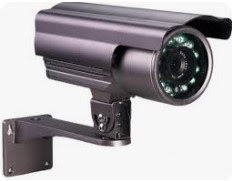Linking CCTV Cameras from Multiple Remote Locations to a Central Monitoring Center involves several steps. Below is a general guide to help you set up a remote CCTV monitoring system:
1. Select the Right CCTV Cameras:
Choose high-quality cameras that meet your surveillance requirements.
Consider factors such as resolution, field of view, low-light performance, and
weather resistance.
2. Network Infrastructure:
Ensure a reliable and high-speed internet connection at both the remote
locations and the central monitoring center. Consider using broadband, fiber
optics, or other high-speed connections.
3. IP Cameras:
OPT for IP cameras as they can transmit video data over the internet.
Make sure the cameras are compatible with your network and can be accessed
remotely.
4. DVR or NVR Systems:
Set up Digital Video Recorder (DVR) or Network Video Recorder (NVR)
systems at each remote location to store and manage video footage. NVRs are
more suitable for remote access and offer better scalability.
5. Static IP Addresses or Dynamic
DNS:
Obtain static IP addresses for each remote location or use Dynamic
Domain Name System (DDNS) services to ensure the cameras have a consistent and
accessible address over the internet.
6. Port Forwarding:
Configure port forwarding on the routers at the remote locations to
allow external access to the CCTV cameras. This involves directing specific
ports to the internal IP addresses of the cameras.
7. VPN (Virtual Private Network):
Set up a VPN to establish a secure connection between the remote
locations and the central monitoring center. This adds an extra layer of
security to the data transmitted between the locations.
8. Firewall Configuration:
Adjust firewall settings to allow the necessary traffic through the
network. This includes both the firewalls on the routers at the remote
locations and the central monitoring center.
9. Central Monitoring Software:
Install central monitoring software at the monitoring center. This software
should be compatible with the cameras and NVR systems you've chosen. It allows
you to view and manage multiple cameras from a single interface.
10. Authentication and Encryption:
Enable strong authentication methods and encryption to secure the communication
between the cameras and the central monitoring center.
11. Testing:
Thoroughly test the entire system to ensure remote access, video
streaming, and alerts are functioning correctly. Identify and address any
potential issues.
12. Monitoring and Maintenance:
Regularly monitor the system for any anomalies or issues. Perform
routine maintenance, such as updating firmware and security patches, to keep
the system secure and operational.
Always consult with a professional if you're unsure about any aspect of
the setup, and consider legal and privacy considerations when implementing a
CCTV system. Additionally, compliance with local laws and regulations regarding
surveillance is crucial.




0 Comments